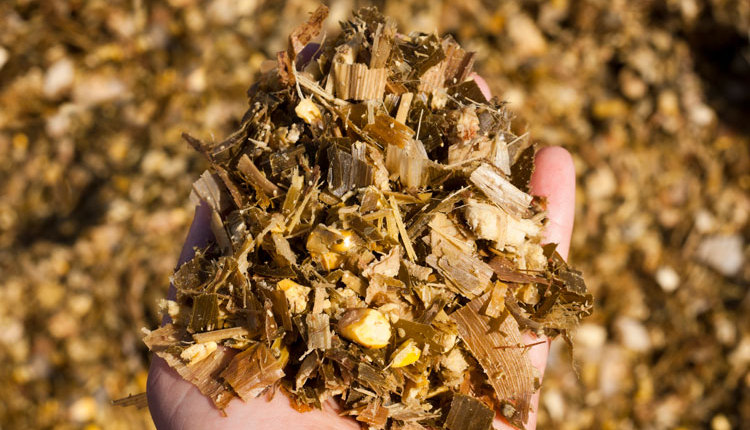The author is a professor and extension dairy specialist with Kansas State University.

Dairy diets today typically contain 25% to 35% corn silage on a dry matter basis, and some may exceed these levels. With greater inclusion rates, the quality of the corn silage becomes important to the performance of the dairy herd.
Great corn silage does not happen by accident. It is the result of careful planning and effective execution of the plan. It involves a team, including the dairy producer, corn grower, and custom harvester. Sometimes these three are under the same ownership, but most of the time the dairy producer needs to get the other team members to agree to the plan.
Many factors define great corn silage, but the most important include finished moisture content, yield, starch content, starch digestibility, fiber content, fiber digestibility, quality of fermentation, and the absence of anti-quality factors, including molds and mycotoxins.
It begins with seed
The planning process starts with hybrid selection. Choose hybrids adapted for the soils and growing conditions in your region. You may encounter a lack of silage-specific data for your area and need to expand the search to data from grain studies while working with your seed suppliers to identify closely related silage hybrids. Soil types and environmental stresses have important impacts on yield and quality.
If you have a minimal amount of specific hybrid data available, do a small test plot on your own operation. When selecting hybrids, consider your silage harvest window. If you have a window that extends for a few weeks, selecting hybrids with different harvest maturities and using multiple planting dates will help match harvest timing to the maturity of the silage crop.
Hybrid selection will have a considerable impact on fiber content, starch content, and fiber digestibility. Many regions have access to brown midrib (BMR) hybrids that generally have better fiber digestibility compared to conventional hybrids. This could be a home run for silage quality if you can realize improved forage digestibility with no loss of starch content.
The next step is establishing the planting plan. This includes the timing of planting and the soil fertility, pesticide, and weed control programs. Giving hybrids the best opportunity to perform are dependent on adequate nutrition and the removal of production barriers. It’s no different than your dairy herd.
With higher nitrogen costs, it is tempting to reduce the amount applied. Work closely with an agronomist to determine the adequate levels for your situation. Under application of nitrogen will limit the yield of forage and grain. Sometimes, a production cost savings may actually result in higher-cost forage due to lack of tonnage and/or grain yield.
If you are on irrigated land, the irrigation plan is essential. Make sure you have adequate water available for the whole season. If you are going to be short of water, work with your agronomist to determine the appropriate plant populations to match the available water. This is a tricky question due to the correlation between plant population and silage yield. Remember that the irrigation at the end of the growing season has a direct impact on starch yield. Considering that 20% of the starch is deposited in the last two to three weeks prior to harvest, running out of water at the end of the season will reduce silage quality.
A most decisive time
Harvest timing may be the single most important part of the plan. Harvesting at the correct moisture (62% to 64%) and grain maturity is critical to obtaining high-quality corn silage. This generally requires purposeful coordination with the custom harvester. Matching planting decisions to provide an adequate harvest window for the available equipment and harvest personnel is a critical discussion. It goes beyond the chopper and extends to adequate packing in the silo.
Consider the cut length and kernel processing capabilities of the equipment being used. Cut length will depend on the effective fiber needs of the herd as directed by the herd nutrition professional. Current goals for adequate kernel processing score (KPS) have risen to 75% to 80%. Effectively communicating to the custom harvester the goals for KPS is the responsibility of the dairy producer.
Well in advance of harvest, decide on the type and application of silage inoculants. Sometimes is it advantageous to choose different inoculants for forage fed during the summer versus winter. Controlling secondary fermentation will reduce the loss of the most digestible nutrients from the silage mass. Match inoculant selection to the need to control secondary fermentation.
Finally, ensure that secondary fermentation does not negate all the hard work of the previous steps. Carefully cover and seal within a few hours of completing silo filling. Maintenance of the silo cover is important to prevent silage loss during storage. Matching the silo face to the volume removed daily is another example of controlling secondary fermentation.
Delivering a high-quality silage is a major management component of top-producing dairy herds. Often, poor silage quality reduces daily herd production by 5 or more pounds per cow. A silver bullet does not eliminate the negative impact of poor silage. Attention to the details and development and execution of a plan is necessary; it does not happen by chance.
So, how did you do in 2022? Some goals for the corn silage you are feeding today might be: 36% to 38% dry matter, more than 38% starch, KPS of 75 or greater, total tract neutral detergent fiber digestibility (TTNDFD) of 50%, 30-hour NDFD of 60% or greater, and 7-hour starch digestibility of 75 or greater. If you did not achieve these goals, try to determine why.
This article appeared in the April-May 2023 issue of Hay & Forage Grower on page 10.
Not a subscriber? Click to get the print magazine.

